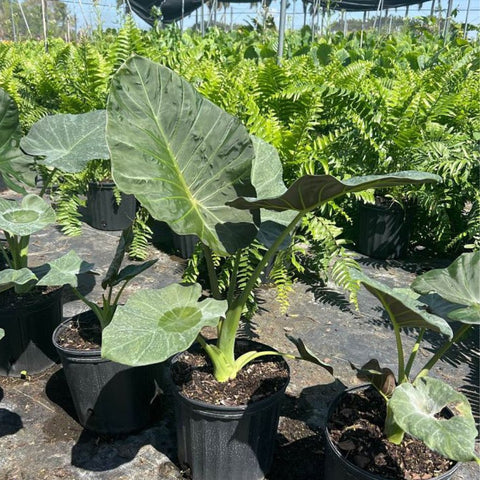Introduction
The beauty of springtime is undeniable: trees bursting into bloom, vibrant flowers carpeting gardens, and the melodious call of birds celebrating the end of winter. Yet, for many gardeners, this season of renewal also heralds a gamut of challenges. From unpredictable weather conditions to pest invasions, the dream of lush, thriving gardens can easily turn into a gardener's nightmare. These spring gardening problems can be frustrating, but they also offer the tremendous satisfaction of overcoming hurdles and seeing one's garden flourish.

In this comprehensive guide, we'll delve into the most common spring gardening woes, explore sustainable and organic solutions, and introduce you to premium products from Plantology that can aid in transforming your garden into a picturesque retreat. Whether you're battling soil deficiencies or fending off persistent pests, we've got you covered with practical solutions and top-tier products tailored for every gardener's needs.
Soil Preparation Issues
Understanding Soil Health
Soil is the foundation of any thriving garden. Without healthy soil, plants struggle to access the nutrients they need for growth. That's why understanding and assessing soil health is a crucial first step in spring gardening.
Importance of Soil Testing
Performing a soil test is akin to conducting a health check-up. It reveals essential information such as pH levels, nutrient availability, and texture. By determining these variables, you can tailor your soil amendments and choose plants that will thrive in your garden's specific conditions.
Interpreting Soil pH and Nutrient Levels
Soil pH affects the availability of nutrients to plants. Most garden plants prefer a pH level between 6.0 and 7.5. If your soil is too acidic or alkaline, certain nutrients may become inaccessible, leading to deficiencies or toxicities. Understanding these levels allows you to adjust your soil to optimal growing conditions using amendments like lime or sulfur as needed.

Solutions to Common Soil Problems
After assessing your soil's health, you might find that it requires some adjustments. Here are a few solutions to common soil issues:
Improving Soil Texture and Moisture Retention
Clay or sandy soils can pose problems by either retaining too much water or not enough. To enhance soil texture and moisture retention, organic matter such as compost or well-rotted manure should be added. This not only improves drainage in clay soils but also increases water-holding capacity in sandy soils.
Addressing Nutrient Deficiencies
If your soil test indicates nutrient deficiencies, consider using organic fertilizers. Products like aged manure or composted kitchen waste can boost nutrient levels. Additionally, Plantology offers an array of nutrient-rich soil amendments designed to meet the specific needs revealed by your soil test.
Pest and Disease Management
Identifying Common Spring Pests
With the resurgence of warm weather, various pests emerge, eager to feast on your newly sprouting plants. Know your enemies by identifying common pests such as aphids, slugs, and caterpillars, each of which targets specific plants in the spring garden.
Organic Control Methods
Managing pests organically helps preserve the ecosystem's balance while protecting your plants. Here are some strategies:

Companion Planting
Certain plants naturally deter pests. Incorporating companion plants like marigolds and chrysanthemums can help protect more susceptible plants from pest invasions. Marigolds, with their potent scent, can keep nematodes and aphids at bay, while chrysanthemums deter a range of insects.
Biological Controls
Encourage beneficial insects like ladybugs and lacewings, which prey on harmful pests. You can introduce these allies to your garden or cultivate an environment that attracts them. Ensuring there's a balance of plant variety can provide natural habitats and food sources for these helpful insects.
Disease Challenges in Spring
Recognizing Plant Diseases
Fungal diseases such as powdery mildew and rust are prevalent as humidity rises in spring. Early detection is key to preventing widespread damage. Regular monitoring of your plants for unusual spots or discoloration will help you catch issues early.
Effective Disease Management Strategies
Enhancing Air Circulation
Overcrowded planting can lead to poor air circulation, which encourages fungal diseases. Space your plants appropriately and prune excess foliage to promote airflow. This simple act can prevent many common spring diseases.

Utilizing Plant-Disease Resistant Varieties
When selecting plants from Plantology, look for resistant varieties that have been bred to withstand certain diseases. Incorporate these into your garden to naturally minimize the risk of an outbreak.
Spring Weather Woes
Frost and Temperature Fluctuations
Spring weather is notoriously unpredictable, with warm days often interrupted by unexpected frosts. This can be detrimental to tender new growth.
Protective Measures Against Late Frosts
Use row covers, cloches, or even household items like old sheets to protect plants overnight when frost is predicted. Additionally, installing windbreaks may protect plants from cold winds.
Navigating Heavy Rainfall
Spring can also bring excessive rainfall, which may lead to waterlogged soil and root rot.
Improving Drainage
Elevate garden beds and amend the soil with organic matter to improve drainage. If pathways in your garden become waterlogged, consider installing drainage channels to direct water away from vulnerable plants.
To ensure your garden thrives through these challenges, explore the robust selection of hardy plants available at Plantology, such as the Adonidia Palm Double and Agave Caribbean Agave Angustifolia.

Weed Control
Understanding Weeds and Their Impact
Weeds compete with your plants for water, sunlight, and nutrients. Identifying and managing them is essential for a healthy garden.
Organic Weed Management Techniques
Cultivation and Mulching
Regular cultivation can keep weeds at bay. For a long-term solution, apply a thick layer of organic mulch such as straw or wood chips to suppress weed growth. Additionally, consider using landscape fabric in more permanent garden areas.
Natural Herbicides
There are natural options like vinegar or salt-based solutions that can be used to target tough weeds without harming the soil ecology. Always apply these carefully to avoid damaging desirable plants or soil microorganisms.
Gardening Tool Maintenance and Care
The Importance of Tool Maintenance
Well-maintained tools make gardening tasks easier and prevent the spread of disease. Spring is the perfect time to clean, sharpen, and repair tools after winter storage.

Tool Care Tips
Cleaning and Sharpening
Clean your tools by soaking them in soapy water to remove any caked-on dirt or plant residues. Sharpen blades and replace any that are beyond repair for efficient cutting and pruning.
Proper Storage
Store your tools in a dry, organized space to prevent rust and deterioration. Consider using wall hooks or a tool rack to keep them easily accessible and in good condition when not in use.
As the old adage goes, "A gardener's best friend is her trowel." Investing in quality equipment and caring for it ensures long-lasting performance. Explore our range of garden tools and accessories [here](https://plantologyusa.com/).
Conclusion
Spring gardening challenges may seem daunting, but with the right knowledge and resources, your garden can flourish beautifully throughout the season. By leveraging sustainable solutions from Plantology, your garden can overcome soil issues, pests, diseases, and unpredictable weather with ease. From our extensive range of robust, pest-resistant plants like the Agapanthus Lily of the Nile Blue to essential gardening supplies, we have everything you need under one virtual roof.

Embrace the season of renewal with confidence. Whether you're a seasoned gardener or just starting, Plantology is here to support your growing journey with the finest quality plants and gardening advice. Visit our online store today at [Plantology USA](https://plantologyusa.com/) and make the most of your spring garden!
Enhancing Biodiversity in Your Garden
The concept of biodiversity is not limited to untamed wilderness; it can be elegantly embraced even in your backyard. A biodiverse garden supports a multitude of wildlife, from insects and birds to small mammals. Incorporating elements that attract a diverse array of species ensures not only a vibrant garden but also one that is healthier and more resilient to pests and diseases.
Creating a Wildlife-Friendly Environment
Incorporating Native Plants
Native plants are the cornerstone of a biodiversity-friendly garden. Because they have adapted to the local environment, they require less water and fewer resources to thrive. Furthermore, they offer familiar food and shelter for local wildlife. Species like Echinacea, Black-eyed Susan, and Milkweed are excellent choices that provide nectar for pollinators and seed pods for birds.
Providing Habitats
Consider installing birdhouses, bat boxes, and bug hotels to provide safe spaces for nesting and breeding. A small pond or water feature can also attract amphibians and aquatic insects, supporting a wide range of wildlife. Logs and brush piles make excellent shelters for hedgehogs and beetles, integral parts of the food chain.

Practicing Pollinator-Friendly Gardening
The decline in pollinator populations is a pressing environmental issue, but gardeners can play a crucial role in supporting these vital creatures. By selecting a variety of flowering plants with staggered blooming periods, you can ensure there's always a food source available from early spring through late autumn.
Bee-Friendly Blooms
Avoid double flowers or sterile hybrids, which often lack nectar and pollen. Instead, opt for single varieties that bees and butterflies can easily access. Lavender, sage, and sunflowers are popular choices. Additionally, Plantology's selection of pollinator-friendly plants, such as Asters and Goldenrods, are perfect for creating a buzzing paradise.
Innovative Gardening Techniques
Vertical Gardening and Space Optimization
As urban spaces grow tighter, the art of vertical gardening is booming. This technique allows gardeners to optimize small spaces by growing upward rather than outward, perfect for balconies, patios, or even small backyard fences.
Implementing Vertical Structures
Install trellises, hanging pots, and wall-mounted planters to create a vertical garden. Vining plants like sweet peas, tomatoes, and climbing roses can beautifully drape over these supports, adding both greenery and visual intrigue.

Hydroponics and Aquaponics
Innovative methods like hydroponics (growing plants without soil) and aquaponics (combining aquaculture and hydroponics) are excellent for maximizing productivity in limited spaces. These systems can be set up indoors or outdoors and are particularly advantageous for growing leafy greens and herbs. They offer an efficient way to garden that uses less water and provides faster plant growth.
Permaculture Principles
Building a sustainable garden starts with embracing permaculture—a holistic system that mimics natural ecosystems. Basic principles include conserving resources, utilizing companion planting, and fulfilling multiple functions with each element in the garden. By incorporating permaculture, you strive for a self-sustaining garden that provides for personal and ecological needs.
Companion Planting
Incorporate a diverse range of plants that support each other's growth. For example, planting legumes with corn can naturally fix nitrogen into the soil, benefiting both crops. Alternatively, grow flowering plants among vegetables to attract pollinators and pest predators.
Creating a Closed-Loop System
In a permaculture system, waste becomes a resource. Practice composting kitchen waste to provide your garden with nutrient-rich organic matter. Rainwater harvesting can also help irrigate your garden with no additional cost, encouraging conservation.

Engaging the Community
Building Community Gardens
Community gardens are a wonderful way to connect with neighbors, share resources, and promote urban green spaces. They foster collaboration and provide educational opportunities through workshops and shared gardening experiences.
Starting and Maintaining a Community Garden
Begin by choosing a suitable location and seeking permission from local authorities. Establish a committee to manage the garden and organize regular meetings to discuss goals, responsibilities, and budget. Rotary composters, shared tool sheds, and seating areas can enhance functionality and enjoyment of the space.
Garden Sharing Initiatives
For those without access to a garden, garden-sharing programs connect people with available space with those eager to cultivate it. This can maximize urban gardening efforts while building community bonds. Platforms like Shared Earth facilitate these exchanges, promoting inclusive gardening opportunities.
Seasonal Garden Planning
Spring Planting Schedule
Planning what to plant and when to plant is crucial for a successful garden. As temperatures rise in spring, it is the ideal time to sow seeds for both cool and warm-season crops. Planning your planting schedule around the last frost date in your region is vital for minimizing plant loss.

Early Spring Crops
Plants that withstand cooler temperatures such as spinach, peas, and radishes can be directly seeded into the ground as soon as the soil is workable. Consider using cold frames or tunnels to give them a head-start and protection from late frosts.
Transitioning to Warm-Season Vegetables
Once the risk of frost has passed, transition to planting warm-season crops such as tomatoes, peppers, and cucumbers. These require warmer soil temperatures and longer daylight hours to thrive. Use Plantology's selection of seeds and seedlings to ensure a fruitful harvest.
Succession Planting
Succession planting is a method to extend your harvest by sowing seeds in intervals throughout the growing season. For example, by planting new lettuce or radish seeds every few weeks, you'll maintain a steady supply of fresh produce and avoid gluts or overproduction.
Embracing Technology in Gardening
Smart Gardening Tools
The advent of technology has revolutionized gardening by making it more efficient and accessible. Smart tools and gadgets can assist in monitoring plant health, optimizing irrigation, and enhancing productivity.
Soil Sensors
Soil sensors provide real-time data on soil moisture, temperature, and nutrient levels, allowing gardeners to make informed decisions. Connect these to a mobile app to receive alerts and ensure your plants' ideal growing conditions.

Automated Irrigation Systems
Smart watering systems with built-in timers and weather sensors help conserve water by adapting watering schedules based on environmental conditions. These systems can be controlled remotely, ensuring your plants receive the right amount of water without under- or overwatering.
By adopting these innovative techniques and equipment, gardeners can enjoy a more productive and sustainable planting year. Plantology's expansive range of products can help both novice and experienced gardeners harness the power of technology to enhance their garden's vitality.
Conclusion
The beauty and bounty of a spring garden are well within reach for those who arm themselves with knowledge and the right strategies. From addressing soil health issues, managing pests and diseases, to incorporating technology and fostering biodiversity, every step plays a vital role in creating a flourishing garden. Plantology remains committed to offering quality products and expertise so gardeners everywhere can develop spaces that are as resilient as they are beautiful. Visit [Plantology USA](https://plantologyusa.com/) today to fast-track your garden transformation journey and enjoy the myriad benefits of spring gardening.






























Comments (0)
There are no comments for this article. Be the first one to leave a message!